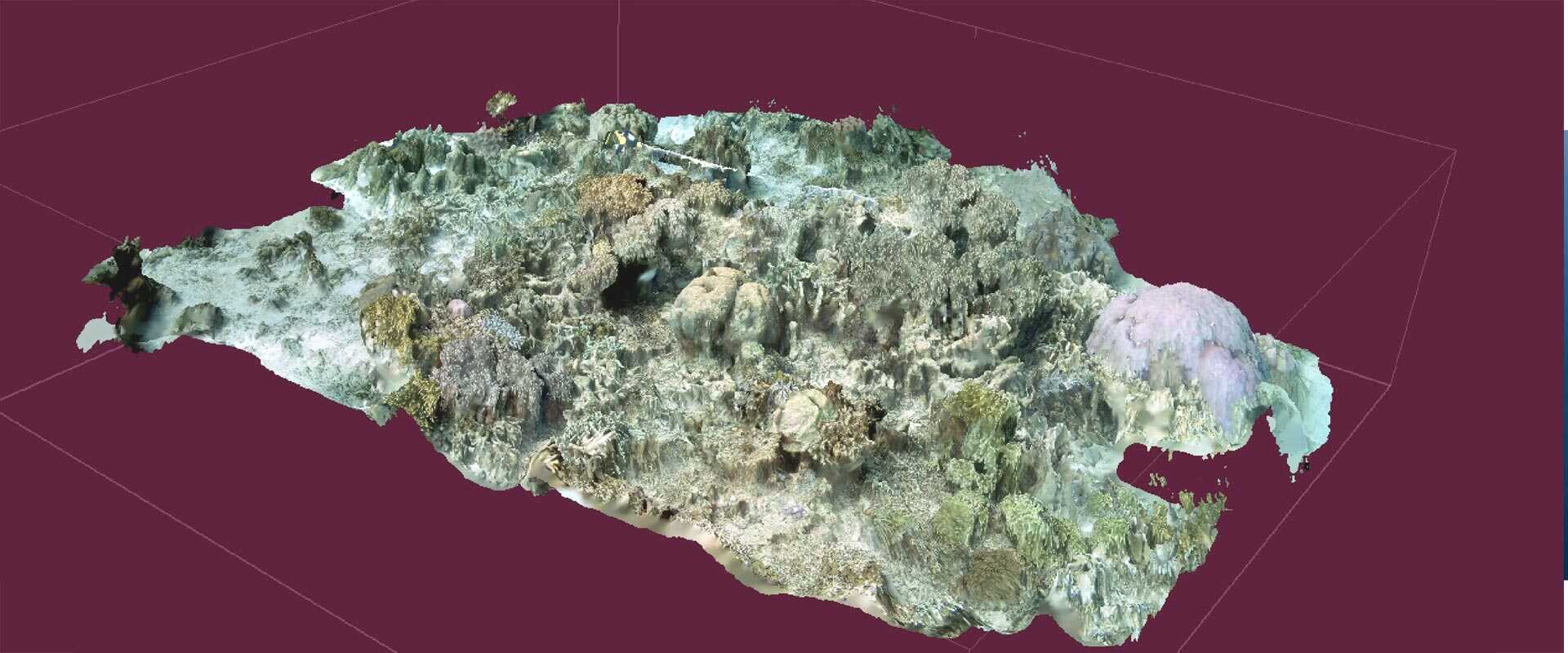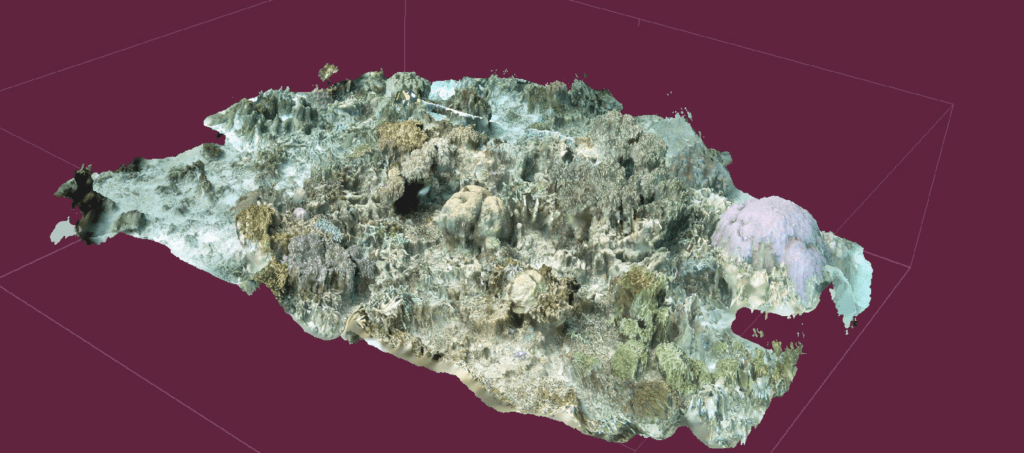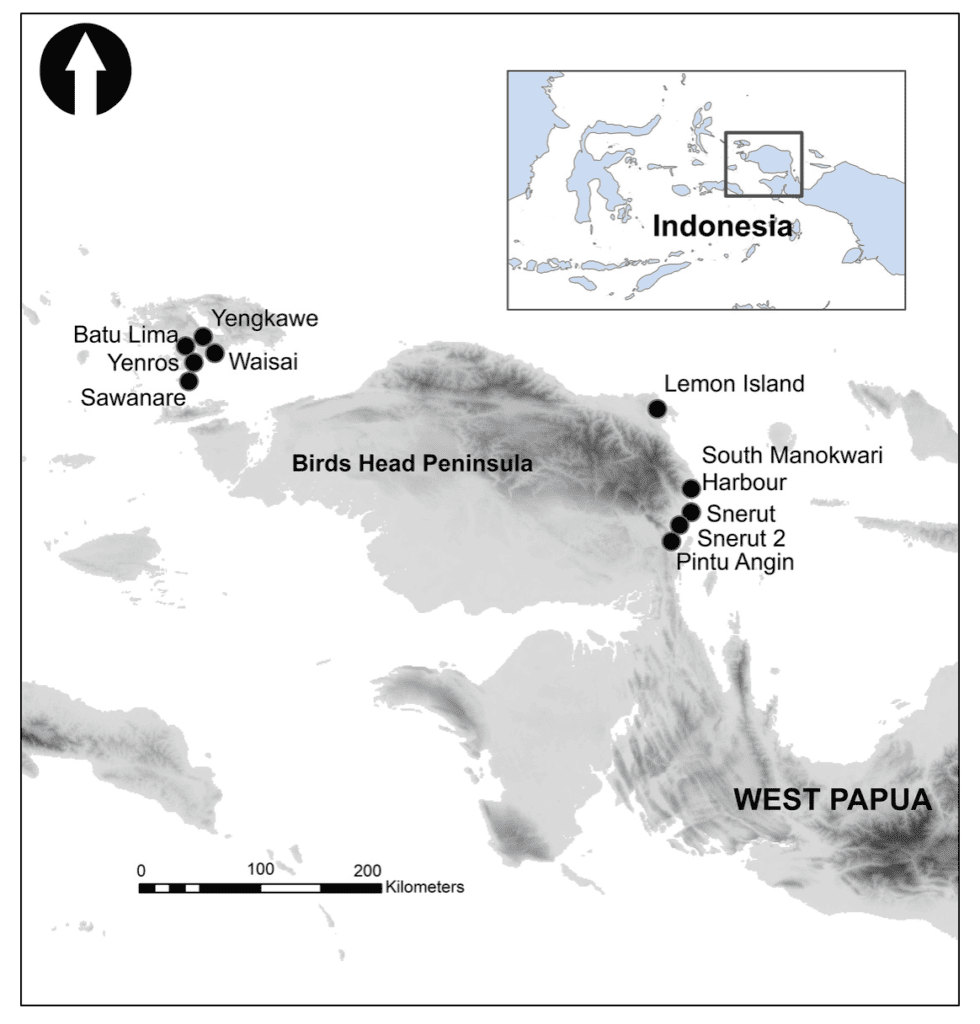Rapid Coral Reef Assessment using 3-D modeling and acoustics by Peck, Tapilatu, Kurniati, Rosado
Rapid coral reef assessment using 3D modeling and acoustics: acoustic indices correlate to fish abundance, diversity and environmental indicators in West Papua, Indonesia
by Mica Peck*, Ricardo F. Tapilatu**, Eveline Kurniati***, Christopher Rosado***
*School of Life Sciences, University of Sussex, Brighton, East Sussex, UK
**Marine Science Department and Research Centre of Pacific Marine Resources, University of Papua, Manokwari, West Papua, Indonesia
***Creative Action Tank, Jakarta, Indonesia
Abstract:
Background
Providing coral reef systems with the greatest chance of survival requires effective assessment and monitoring to guide management at a range of scales from community to government. The development of rapid monitoring approaches amenable to collection at community level, yet recognised by policymakers, remains a challenge. Technologies can increase the scope of data collection. Two promising visual and audio approaches are (i) 3D habitat models, generated through photogrammetry from video footage, providing assessment of coral cover structural metrics and (ii) audio, from which acoustic indices shown to correlate to vertebrate and invertebrate diversity, can be extracted.
Methods
We collected audio and video imagery using low cost underwater cameras (GoPro Hero7™) from 34 reef samples from West Papua (Indonesia). Using photogrammetry one camera was used to generate 3D models of 4 m2 reef, the other was used to estimate fish abundance and collect audio to generate acoustic indices. We investigated relationships between acoustic metrics, fish abundance/diversity/functional groups, live coral cover and reef structural metrics.
Results
Generalized linear modelling identified significant but weak correlations between live coral cover and structural metrics extracted from 3D models and stronger relationships between live coral and fish abundance. Acoustic indices correlated to fish abundance, species richness and reef functional metrics associated with overfishing and algal control. Acoustic Evenness (1,200–11,000 Hz) and Root Mean Square RMS (100–1,200 Hz) were the best individual predictors overall suggesting traditional bioacoustic indices, providing information on sound energy and the variability in sound levels in specific frequency bands, can contribute to reef assessment.
Conclusion
Acoustics and 3D modelling contribute to low-cost, rapid reef assessment tools, amenable to community-level data collection, and generate information for coral reef management. Future work should explore whether 3D models of standardised transects and acoustic indices generated from low cost underwater cameras can replicate or support ‘gold standard’ reef assessment methodologies recognised by policy makers in marine management.
To read the report click here, Rapid Coral Reef Assessment using 3D Modeling and Acoustics.







































